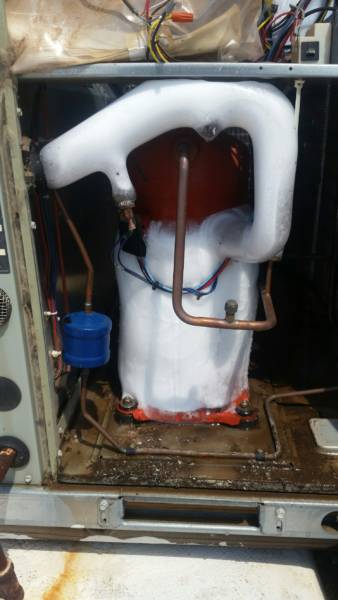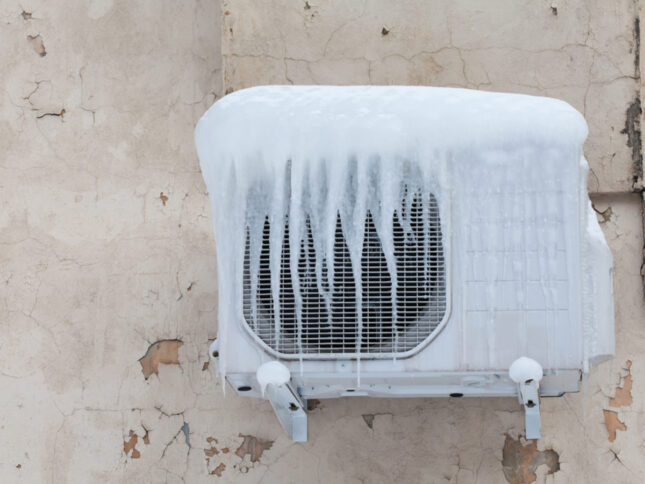Identifying a Frozen AC Pipe - Effective Solutions for Home Cooling Systems
Identifying a Frozen AC Pipe - Effective Solutions for Home Cooling Systems
Blog Article
The content following next in relation to What Do I Do If My AC Pipe Is Frozen is exceptionally intriguing. Check it out yourself and decide what you think of it.

Intro
Uncovering that your air conditioner pipeline is iced up can be concerning, particularly during hot summer months when you rely on your ac unit one of the most. Recognizing what to do in such a circumstance is essential to stop additional damages to your air conditioning system and ensure your convenience indoors.
Recognizing the Causes
A number of variables can contribute to the freezing of an air conditioning pipe. Comprehending these causes can assist you address the issue properly.
Lack of Airflow
One usual cause of a frozen air conditioner pipe is inadequate air flow. When the airflow over the evaporator coil is limited, it can trigger the coil to go down below freezing temperature, bring about ice formation on the pipeline.
Low Refrigerant Levels
Inadequate refrigerant degrees in your a/c system can additionally cause an icy pipe. Low refrigerant levels can cause the pressure in the system to go down, causing the freezing of wetness on the evaporator coil.
Cold Weather Conditions
In colder environments, freezing temperature levels outside can add to the freezing of AC pipes. If your AC device is not appropriately protected or if there are leaks in the ductwork, cool air can infiltrate the system, creating the pipe to freeze.
Dirty Air Filters
Unclean or stopped up air filters can restrict air movement in your air conditioner system, causing different problems, including an icy pipeline. It's important to replace or cleanse your air filters frequently to make certain proper airflow and protect against ice build-up.
Indicators of a Frozen AC Pipe
Identifying the signs of an icy air conditioner pipe is critical for prompt activity.
Minimized Airflow
If you see a substantial decline in air flow from your vents, it could indicate an icy pipeline.
Ice Buildup on the Pipe
Visible ice buildup on the cooling agent line or the evaporator coil is a clear indicator of a frozen air conditioner pipeline.
Strange Sounds from the Unit
Uncommon noises, such as hissing or bubbling, originating from your air conditioning device can indicate that there's ice existing on the pipe.
Immediate Actions to Take
When confronted with a frozen a/c pipeline, it's essential to act swiftly to prevent additional damages to your air conditioning system.
Shutting off the a/c
The first step is to shut off your ac system to prevent the system from running and worsening the problem.
Looking for Blockages
Evaluate the location around the interior unit for any type of obstructions that might be blocking air movement, such as furnishings or curtains.
Thawing the Pipe
You can make use of mild methods like positioning towels taken in cozy water around the icy pipeline to assist thaw it slowly.
Preventive Measures
Taking preventive measures can help stay clear of future occurrences of a frozen AC pipeline.
Routine Maintenance Checks
Arrange regular upkeep get in touch with a specialist HVAC service technician to make sure that your air conditioning system is running efficiently.
Altering Air Filters
On a regular basis replace or clean your air filters to prevent air movement constraints and preserve optimum efficiency.
Protecting Exposed Pipes
If your AC pipelines are subjected to cold temperature levels, take into consideration protecting them to prevent cold throughout cold weather.
Seeking Professional Help
If DIY approaches stop working to resolve the problem or if you're uncertain regarding just how to continue, it's finest to seek help from a certified HVAC technician.
When DIY Methods Fail
If your attempts to thaw the pipe or address other problems are unsuccessful, it's time to contact an expert.
Relevance of Hiring a Professional HVAC Technician
A qualified HVAC professional has the expertise and devices needed to identify and repair concerns with your a/c system safely and successfully.
Conclusion
Dealing with an icy AC pipeline can be a frustrating experience, yet recognizing how to respond can assist decrease damage and recover comfort to your home. By understanding the reasons, recognizing the indications, and taking punctual activity, you can effectively attend to the concern and prevent future incidents.
Frozen AC Line: Why It Happens & What To Do About It
A frozen AC line can be a rather peculiar sight in a place like Phoenix, Arizona where nothing ever freezes. In this post, we’ll discuss what makes an air conditioner line frozen – and what you can do about it.
Dirty Air Filters
Did you know that you should be cleaning or replacing your air filters on a monthly basis? Failing to do this can result in airflow issues that, in turn, cause your evaporator coils and lines to freeze over. You’ll notice a buildup of ice on both components, although the buildup on your pipes will, of course, be more evident unless you open your air condition up to reveal the coils.
What To Do About It
Give your air filter a good cleaning if it’s reusable. If not, replace the filter outright. Next, switch your air conditioner’s fan setting on and leave it there for 2-3 hours. This will draw warm air in, helping to thaw your evaporator coil. You can also check out this article for some tips on cleaning the coils themselves if you’d like to speed the process up. Before you switch the unit back to its normal state, make sure the supply vents are completely unobstructed and free of dust or other debris.
If you keep having this issue even after replacing your filters regularly, contact a local HVAC repair company and have them inspect your evaporator coil, ductwork, and any other components that may be at fault. If you live in the Phoenix, Arizona area, give American Home Water and Air a call.
Low Refrigerant Levels/Leakage
What To Do About It
Contrary to what air conditioner “recharge” companies often tell their clients about refrigerant, it should never need to be simply refilled. You see, refrigerant runs in what experts refer to as a “closed loop.” Refrigerant really shouldn’t be leaving that loop. If it is, you’ve got a leak.
Paying someone to come and pump more refrigerant into your system (aka “recharge” it) isn’t the solution. Doing that will simply kick the can down the road. Besides, refrigerant leaks can be harmful to the environment and people in your home.
Rather, you need to take care of the leak with the help of a technician. Check out this article for some more information about dealing with air conditioners that are leaking refrigerant. Before you contact a technician, switch your thermostat to the off position. Then, switch the fan setting on and let it run for 2-3 hours so the unit can thaw.
Improper Temperature Setting
Improper temperature settings can also cause a drop in your air conditioner’s pressure. What many people don’t realize is that air conditioners are actually designed to run when temperatures have fallen above roughly 60 degrees Fahrenheit. If you run the unit when it’s cold outside, you’ll run into many issues, including frozen components.

I ran across that blog posting about What Causes AC Pipes To Freeze? when surfing the search engines. Are you aware of somebody else who is excited by the topic? Please feel free to promote it. Thanks for your time. Visit us again soon.
Call Us Now Report this page